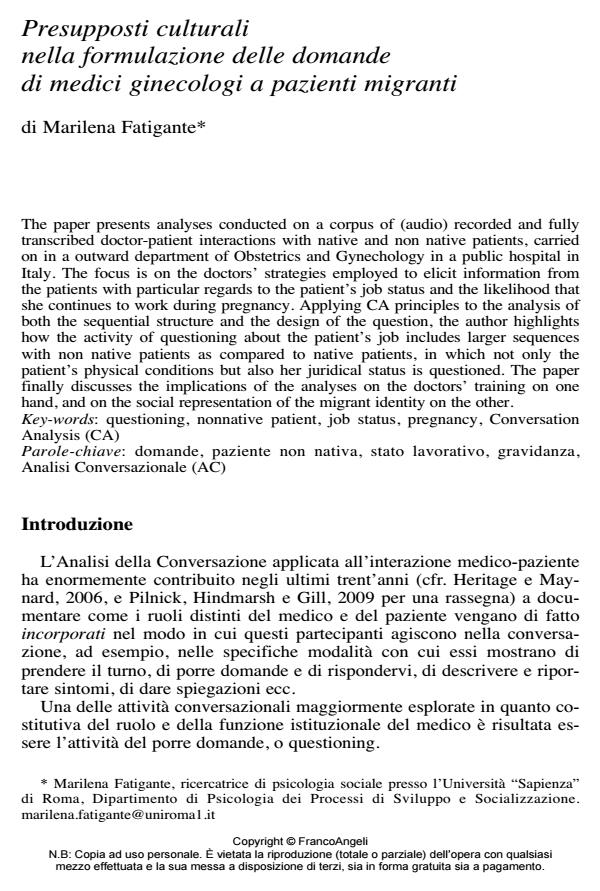Presupposti culturali nella formulazione delle domande di medici ginecologi a pazienti migranti
Titolo Rivista SALUTE E SOCIETÀ
Autori/Curatori Marilena Fatigante
Anno di pubblicazione 2013 Fascicolo 2013/1
Lingua Italiano Numero pagine 17 P. 44-60 Dimensione file 123 KB
DOI 10.3280/SES2013-001005
Il DOI è il codice a barre della proprietà intellettuale: per saperne di più
clicca qui
Qui sotto puoi vedere in anteprima la prima pagina di questo articolo.
Se questo articolo ti interessa, lo puoi acquistare (e scaricare in formato pdf) seguendo le facili indicazioni per acquistare il download credit. Acquista Download Credits per scaricare questo Articolo in formato PDF

FrancoAngeli è membro della Publishers International Linking Association, Inc (PILA)associazione indipendente e non profit per facilitare (attraverso i servizi tecnologici implementati da CrossRef.org) l’accesso degli studiosi ai contenuti digitali nelle pubblicazioni professionali e scientifiche
The paper presents analyses conducted on a corpus of (audio) recorded and fully transcribed doctor-patient interactions with native and non native patients, carried on in a outward department of Obstetrics and Gynechology in a public hospital in Italy. The focus is on the doctors’ strategies employed to elicit information from the patients with particular regards to the patient’s job status and the likelihood that she continues to work during pregnancy. Applying CA principles to the analysis of both the sequential structure and the design of the question, the author highlights how the activity of questioning about the patient’s job includes larger sequences with non native patients as compared to native patients, in which not only the patient’s physical conditions but also her juridical status is questioned. The paper finally discusses the implications of the analyses on the doctors’ training on one hand, and on the social representation of the migrant identity on the other.
Parole chiave:Domande, paziente non nativa, stato lavorativo, gravidanza, Analisi Conversazionale (AC)
- Interculturality in Institutions Carlo Orefice, Alessandra Romano, pp.41 (ISBN:978-3-031-12625-3)
- Interculturality in Institutions Marilena Fatigante, Cristina Zucchermaglio, Francesca Alby, pp.161 (ISBN:978-3-031-12625-3)
Marilena Fatigante, Presupposti culturali nella formulazione delle domande di medici ginecologi a pazienti migranti in "SALUTE E SOCIETÀ" 1/2013, pp 44-60, DOI: 10.3280/SES2013-001005